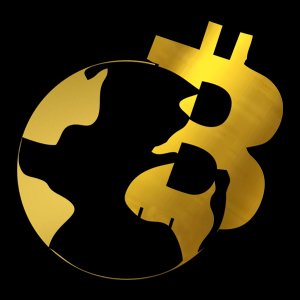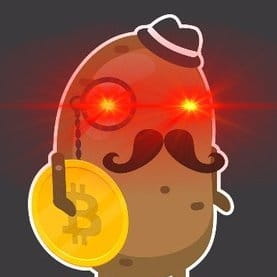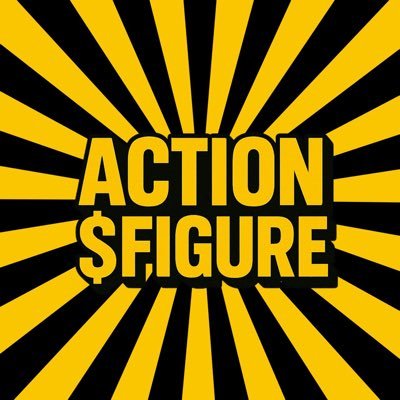Victory for CyberKongz: SEC Investigation Ends, Paving Way for Web3 Gaming
In a landmark moment for the Web3 gaming space, CyberKongz , the popular Ethereum-based NFT project, has announced the successful closure of a Securities and Exchange Commission (SEC) investigation. The probe, which had cast a shadow of uncertainty over the project and the broader sector, concluded without any enforcement action. This development marks a significant win for CyberKongz and is being hailed as a beacon of hope for regulatory clarity in the burgeoning world of Web3 gaming and NFT projects.
The SEC’s scrutiny of CyberKongz primarily stemmed from concerns surrounding its BANANA token and a contract migration that occurred back in 2021. These actions placed CyberKongz under the regulatory microscope, prompting the agency to delve into whether these aspects of the project fell under securities laws. The situation intensified in December when CyberKongz received a Wells notice, a formal communication indicating that the SEC staff intended to recommend an enforcement action against the company.
A Wells notice is a serious matter, acting as a precursor to potential legal battles and significant penalties. It essentially gives the recipient a chance to argue why enforcement action should not be taken. For CyberKongz, this notice triggered a period of intense uncertainty and required them to engage legal counsel and cooperate fully with the SEC’s inquiries. The fact that the investigation has now been closed without any action speaks volumes about CyberKongz’s compliance and the arguments they presented to the regulatory body.
Unsurprisingly, the CyberKongz team has expressed immense relief and satisfaction at the outcome. They view this conclusion as not only a personal victory but also a positive sign for the entire Web3 gaming ecosystem. In a statement released shortly after the announcement, the team highlighted that this development brings much-needed regulatory clarity to a space often plagued by ambiguity and uncertainty. This sentiment was echoed across the Web3 community, with many seeing it as a crucial step forward in legitimizing and fostering innovation in the sector.
CyberKongz is not alone in experiencing SEC scrutiny and subsequently emerging unscathed. This positive outcome places them alongside other prominent NFT projects like Yuga Labs (the creators of Bored Ape Yacht Club) and the leading NFT marketplace OpenSea , all of whom have recently navigated similar investigations and been cleared without enforcement action. This trend suggests a potential shift in the SEC’s approach, or perhaps a clearer understanding of the nuances within the NFT and NFT project space.
Key Projects Navigating SEC Scrutiny:
This pattern of investigations concluding without enforcement raises important questions. Is the SEC refining its approach to regulating digital assets? Are these projects demonstrating sufficient compliance to satisfy regulatory concerns? Or is this a signal that the initial wave of intense scrutiny is giving way to a more nuanced and practical regulatory landscape for the NFT project and Web3 industries?
The closure of the SEC investigation into CyberKongz is particularly meaningful for the Web3 gaming sector. Gaming, with its inherent digital nature and vibrant virtual economies, is seen as a prime use case for blockchain technology and NFTs. However, the regulatory uncertainty surrounding digital assets has been a significant impediment to growth and innovation in this area.
Benefits of Regulatory Clarity for Web3 Gaming:
The CyberKongz case, along with the outcomes for Yuga Labs and OpenSea, could represent a turning point. It suggests that projects operating responsibly and engaging constructively with regulators can navigate the complex legal landscape and achieve positive outcomes. This is a crucial message for the entire Web3 space, encouraging proactive compliance and open dialogue with regulatory bodies.
For CyberKongz, this SEC closure allows them to fully focus on their core mission: building and expanding their NFT gaming ecosystem. Freed from the shadow of the investigation, they can now confidently pursue their roadmap, innovate further, and continue to engage their community. For the broader Web3 gaming industry, this development offers a renewed sense of optimism and encourages continued development and investment.
However, it’s crucial to remember that the regulatory landscape for digital assets is still evolving. While this is a positive signal, it does not mean the Web3 space is entirely free from regulatory oversight. Projects must remain vigilant, prioritize compliance, and stay informed about ongoing regulatory developments. Engaging with legal experts and adopting best practices will be essential for navigating this dynamic environment and ensuring long-term success.
The SEC’s decision to close the CyberKongz investigation without enforcement action is more than just a win for one NFT project; it’s a potentially transformative moment for the entire Web3 ecosystem. It provides a tangible example of how projects can successfully navigate regulatory scrutiny and emerge stronger. This victory offers a powerful signal of hope and regulatory clarity, encouraging innovation and growth in the exciting and rapidly evolving world of Web3 gaming and beyond. The message is clear: responsible innovation and proactive compliance can pave the way for a thriving and sustainable future for decentralized technologies.
To learn more about the latest crypto market trends, explore our article on key developments shaping Ethereum price action.
Disclaimer: The information provided is not trading advice, Bitcoinworld.co.in holds no liability for any investments made based on the information provided on this page. We strongly recommend independent research and/or consultation with a qualified professional before making any investment decisions.

How NFTs Changed Digital Ownership Forever
For decades, owning digital assets meant having access but not control. You could download music, stream movies, or play games online, but the files were never truly yours. That changed with the rise of NFTs (Non-Fungible Tokens).
NFTs have redefined what it means to "own" something online, shifting power from centralized platforms to users, creators, and collectors. Here's how this digital revolution began and why it's here to stay.
What Is an NFT?
An NFT is a unique digital token stored on a blockchain that represents ownership of a specific asset.
Unlike cryptocurrencies like Bitcoin or Ethereum (which are fungible, or interchangeable), each NFT is one-of-a-kind and cannot be duplicated.
NFTs can represent:
• Art and collectibles
• Music, videos, or literature
• Virtual land and gaming items
• Event tickets or real-world assets
They serve as proof of authenticity and ownership public, verifiable, and tamper-proof.
The Old World of Digital Ownership
Before NFTs, digital ownership came with limitations:
• You didn’t really own your iTunes music you licensed it.
• Game assets existed only within a platform; they couldn’t be traded or sold freely.
• Digital art was easily copied, shared, and monetized by others without credit or payment to the creator.
Everything lived on centralized servers, controlled by corporations. Users and creators had little say.
What NFTs Changed
1. True Digital Ownership
NFTs allow people to own a digital file the same way they’d own a physical object.
Ownership is provable, transferable, and permanent.
2. Empowering Creators
Artists and musicians no longer need galleries or labels.
With NFTs, they can:
• Sell directly to fans
• Earn royalties every time their NFT is resold
• Protect their intellectual property on-chain
This created a new creator economy, often called “Web3 art.”
3. Market Liquidity for Digital Goods
NFT marketplaces like OpenSea, Blur, and Magic Eden created a global, 24/7 secondary market for digital assets.
From gaming skins to virtual land, digital items could now:
• Be bought and sold freely
• Gain real-world value
• Move between platforms (in some cases)
4. Digital Identity and Community
Owning an NFT like a Bored Ape or CryptoPunk became a digital identity badge your ticket into communities, DAOs, and exclusive content.
NFTs are more than collectibles they're social signals and access keys.
Real-World Use Cases Emerging
NFTs are expanding beyond art and PFPs (profile pics). New frontiers include:
• Gaming: Own characters, weapons, and land (e.g., Axie Infinity, Illuvium).
• Music & Film: Fans own limited-edition tracks or even revenue shares.
• Real Estate: Tokenizing property ownership for easier transfer.
• Event Access: NFT tickets prevent fraud and enable post-event collectibles.
• Digital Certificates: Diplomas, memberships, and licenses as NFTs.
The Challenges
NFTs have also faced criticism and hurdles:
• Volatility: Prices fluctuate wildly, and markets have cooled since 2021.
• Scams & Fakes: Copycats and rug pulls damaged trust early on.
• Environmental Concerns: Though many NFTs now use eco-friendly chains, early minting was energy intensive.
• User Experience: Wallets, gas fees, and onboarding remain barriers.
Despite this, the technology is improving, and use cases continue to grow.
Final Thoughts: A New Paradigm
NFTs fundamentally shifted digital ownership from platforms to people.
They gave creators more power, users more freedom, and digital goods real-world value.
While the hype cycles may come and go, the core idea that you can truly own something digital is a breakthrough that’s here to stay.
NFTs didn't just change art. They changed the internet.
Ethereum (ETH): The World’s Leading Smart Contract Platform
1. Introduction to Ethereum
Ethereum is an open-source, decentralized blockchain platform that enables developers to build and deploy smart contracts and decentralized applications (dApps). Launched in 2015 by Vitalik Buterin and other co-founders, Ethereum is the second-largest cryptocurrency after Bitcoin in terms of market capitalization.
While Bitcoin is primarily a digital currency, Ethereum functions more like a decentralized global computer that can run code autonomously.
2. What Makes Ethereum Unique?
Smart Contracts: Self-executing agreements coded to perform actions automatically when conditions are met.
Ethereum Virtual Machine (EVM): The environment that runs smart contracts on Ethereum.
Decentralized Applications (dApps): Apps built on Ethereum that operate without a central server.
Programmability: Ethereum allows developers to create custom tokens, apps, and services.
3. How Ethereum Works
Blockchain: A public ledger that records transactions and contract activity.
Nodes: Computers that maintain and validate the blockchain.
Accounts:
Externally Owned Accounts (EOA): Controlled by private keys (users).
Contract Accounts: Controlled by code (smart contracts).
4. Ethereum vs Bitcoin
5. Major Upgrades: Ethereum 2.0 & The Merge
Originally launched using Proof of Work (PoW), Ethereum transitioned to Proof of Stake (PoS) in September 2022 through an event known as The Merge.
Proof of Stake: Validators are selected based on how much ETH they stake, rather than computational power.
Benefits:
~99% reduction in energy usage
More scalable and eco-friendly
6. The Ethereum Ecosystem
Ethereum powers a large and diverse ecosystem:
DeFi (Decentralized Finance): Platforms like Uniswap, Aave, and MakerDAO offer lending, trading, and yield farming.
NFTs: Projects like CryptoPunks and Bored Ape Yacht Club are built on Ethereum.
DAOs: Community-run organizations that use smart contracts to make decisions.
Stablecoins: USDC, USDT, and DAI are popular Ethereum-based stablecoins.
Layer 2s: Solutions like Arbitrum, Optimism, and zkSync improve scalability.
7. Use Cases of Ethereum
Tokenization: Create ERC-20 and ERC-721 tokens.
Gaming: Blockchain-based games with real digital ownership.
Finance: Decentralized lending, borrowing, insurance.
Identity: Secure and verifiable self-sovereign identity systems.
Voting: Transparent digital governance.
Supply Chain: Track product history and authenticity.
8. Advantages of Ethereum
Flexible & Programmable
Large Developer Community
Secure and Transparent
Interoperable with Other Chains
Constantly Evolving through Upgrades
9. Challenges and Criticisms
Scalability Issues
High Gas Fees During Peak Times
Smart Contract Risks (Bugs & Exploits)
Rival Competition (e.g., Solana, Avalanche, BNB Chain)
10. Ethereum’s Future: The Roadmap
Ethereum's ongoing development includes:
The Surge: Scalability improvements with rollups and sharding
The Scourge: Reduce miner extractable value (MEV)
The Verge: Lighter client software (stateless clients)
The Purge: Prune historical data for efficiency
The Splurge: Final improvements and upgrades
Goal: Make Ethereum scalable to 100,000 transactions per second (TPS)
11. ETH as a Cryptocurrency
Ticker: ETH
Uses:
Gas fees for transactions
Staking for network validation
Collateral in DeFi apps
Market: Second-largest crypto globally after Bitcoin
12. Ethereum in Africa and Emerging Markets
Ethereum is popular in regions like Nigeria for:
Investment and Trading
Stablecoin Transactions
P2P Payments
NFT Sales and Digital Art
Building Local dApps and Startups
13. Conclusion
Ethereum is more than just a cryptocurrency — it’s a decentralized platform for innovation across finance, art, governance, and technology. With its strong community, clear roadmap, and widespread adoption, Ethereum remains a foundational layer for the future of the internet and Web3.$ETH
NFT Trader Suffers $10M Loss After Sale of Rare Alien CryptoPunk
An anonymous NFT collector has suffered a $10 million loss after selling one of the rarest CryptoPunks on Thursday.
On-chain data shows that Punk #3100 changed hands for 4,000 ETH, translating to approximately $6.07 million via a private transaction on the official CryptoPunks marketplace.
The NFT is one of just nine Alien Punks in the original 10,000-piece CryptoPunks collection created by Larva Labs in 2017. Recognized for its distinctive blue skin and bandana, the Alien Punk is part of the most sought-after group in the NFT space.
Blockchain data from Arkham Intelligence shows that this particular NFT previously sold in March of last year for 4,500 ETH, then valued at more than $16 million. The sale ranks as the third most expensive single NFT transaction by dollar value. Just days after that transaction, Punk #7804 exchanged for 4,850 ETH worth roughly $16.42 million at the time, marking the second-largest deal in the collection’s history.
However, due to Ethereum’s price drop over the past year, Thursday’s 4,000 ETH sale amounted to just over $6 million, resulting in the seller making a $10 million loss from the transaction.
While the parties in the exchange remain unidentified, Etherscan records show that the purchasing wallet received 4,001 ETH from an account labeled “Coinbase Prime 2” shortly before the sale.
Alien CryptoPunks continue to dominate the top end of the NFT market. They are the rarest type in the collection, even more than the 88 Zombie Punks or the 24 Ape Punks. The top seven of the highest-value on-chain CryptoPunk sales involve these variants.
Despite their status, CryptoPunks have not been immune to the broader downturn in the NFT market. Data from NFT Price Floor shows that their asking price has dropped nearly 43% in the last three months, currently sitting at $71,031. This figure marks a notable decline from the collection’s peak in November 2021, when the figure exceeded $400,000.
Originally offered for free in 2017, the digital assets have evolved into cultural symbols of the early NFT era. In 2022, the intellectual property rights were acquired by Yuga Labs, creator of the Bored Ape Yacht Club.
Earlier this year, speculation swirled about a possible sale of the product’s IP. However, Yuga Labs co-founder Greg Solano dismissed the rumors, stating that while many parties had approached the company, there were no plans to divest any time soon.



 最低価格
最低価格 最高価格
最高価格 






































